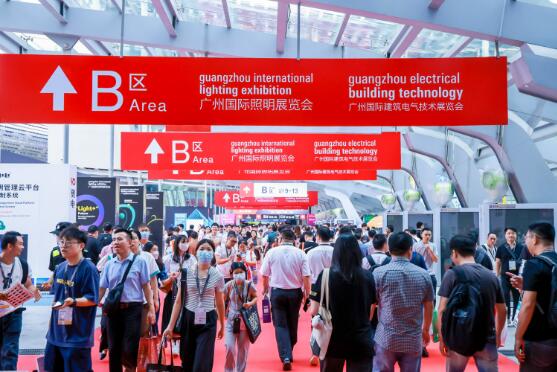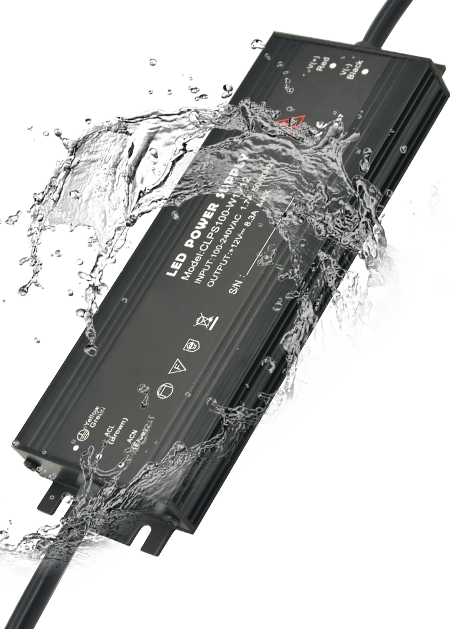Commonly, lighting systems have consisted of incandescent, fluorescent, and halogen lamps. Every little thing has changed with the increase in popularity of LEDs, which are locating extensive use in both interior and exterior illumination. The leading chauffeurs of this fad are energy financial savings, long life expectancy, dependability of solid-state gadgets, and the amazing adaptability that an LED component can bring to a lights application. Nevertheless, to enhance them, their power supply has to be chosen carefully.
Select LED Power Supply Very Carefully
A voltage is applied to all LEDs with a current passes through it, the LED will light. The voltage must be equal to or above the direct voltage drop across the LED (typically in the order of 2-3V) as well as the current can normally be 350mA for a 1W LED, which is a minor power rating used in lights. Nonetheless, suppose the applied voltage goes beyond the straight voltage score of the LED. In that case, the present moving with it increases exponentially, generating a considerable rise in the LED chip’s temperature level, which can cause its failure.
Supply an ample voltage
The power supply needs to, for that reason, give a sufficient voltage for the correct requirement. The most accessible means to do this is to use a power supply with a result voltage higher than the straight voltage of the picked LED and restrict the existing to the optimum value defined by the LED producer with a resistor. The disadvantage of this strategy is that the power dissipated by the resisting jeopardizes the advantages of the high performance of LED lights. An added problem with this technique is that the junction temperature level of the Led influences its forward voltage. Since the power supply’s output voltage is fixed and the voltage at the ends of the existing restricting gadget can vary, the Led current can also vary excessively. This adjustment in current can affect the amount of light given off and reduce the integrity of the Led.
Control the Led with a present consistent resource
The best strategy, as a result, is to manage the Led with a present continuous source. This permits the current to be set at the maximum value specified by the Led manufacturer for maximum performance and dependability or to achieve the exact illumination needed by removing temperature level impacts resulting from the Led or ambient temperature level variation at the junction. Among the benefits of using LEDs in lighting applications is the ease of varying the illumination. Can attain this by differing the current through the LED proportional for light produced. Nonetheless, the LED with a current less than its optimum decreases efficiency and might have small variants in the shade sent out.
PWM
For that reason, a better means is to have a pulse existing with a worth in between no and maximum to vary the average light produced. With a sufficiently high frequency, it is prevented that the human eye can perceive the pulses as flickering; this is the best method to vary the intensity of light sent out by the LED. The current pulses are usually at a set frequency by differing the proportion between the no current and optimal current. This approach is called PWM (Pulse size modulation).
Picking the power supply
Selecting the type of power supply for lighting applications is based upon several factors. Initially, environmental factors to consider. Is the application for interior or outdoor usage? Should the power supply be water-proof or have a specific level of security? Will the power supply requirements make use of conduction cooling or convection air conditioning?
What is the total power required?
A single light component may only need a percentage of power; however, a complicated system might need a power supply that offers numerous watts. In addition, are there various other attributes required? For example, is it called for the power supply to work in constant voltage or constant existing mode? Is there a requirement for possible dimming? From a governing perspective, does the system overall have to maintain harmonic currents within specific restrictions? Will you need to comply with illumination safety and security laws, or is an ITE power supply ideal? In these times of energy conservation, exactly how effective does the ballast requirement be? Should this degree of effectiveness be preserved with any input power when the lights are off?
Security Standards
Different standards apply to lighting systems. Worldwide there is the Iec61347 Part 1, which includes the general safety needs of control devices for lights, and part 2 section 13, which applies source of the power of LED components, the United States has the UL8750, and in Europe, the En61347, which corresponds to the IEC for the paragraphs listed above.
Harmonic currents
In lighting applications, in general, it is needed that the harmonic currents produced to fulfill the needs of En61000-3-2, where the category of lighting tools is course C. Within this course, there are a number of restrictions with an active input power above 25 W as well as other limits if it is equal to or listed below 25 W. However, the requirement for 25 W and listed below are mainly associates only with discharge lights. Power variable adjustments are typically used to meet power limits over 25 W. Because these limits are determined as a percentage of the base value rather than the total value of amps. It is best to use a power supply explicitly developed for lighting applications rather than an ITE-type power supply. However, an ITE power supply will likely meet the limits because the lighting tons are higher than 40-50% of the optimal power supply lots.
An instance of a power supply mainly created for LED illumination is XP Power’s DLE series with IP67 protection. The variety includes 15-, 25-, 35- as well as 60-watt models as well as satisfy EN61347 and UL8750 safety specifications.
LED setup
Some applications might only utilize a single LED. The power used by this will commonly be around 1 W with an ahead voltage of 2-3 V as well as existing around 350 mA. While this will undoubtedly produce one type of light, it is more likely that LEDs will be used in some range in a lamp or group of lamps to get a brighter light source and keep the light as uniform as possible. The LEDs will usually be set up in among four possible arrangements. Positioning the LEDs in a series, parallel or matrix structure (mix of series and parallel) enables them to be driven by a solitary power supply. The 4th setup uses multiple channels that need numerous power materials.
Collection configuration
In this arrangement, the private LEDs are set up in series. This provides the benefit that the very same present flows with everyone and also. As a result, you have the very same brightness output. Another advantage is that if one LED fails to trigger a short circuit, the various other LEDs will continue working. A disadvantage, nevertheless, is that if a damaged LED develops an open circuit, the current circulation is interrupted, and all the other LEDs head out. An additional disadvantage is that if several LEDs are called to create the wanted amount of light, the voltages guided at the LEDs are accumulated to ensure that a power supply with a very high result voltage is required.
Identical arrangement
If attached in parallel, the LEDs can still be arranged in two or more strings of LEDs in series. The advantage is that for the very same variety of LEDs, i.e., to have the same brightness, the power supply might have a lower result voltage; this is since you have a lower number of LEDs in each string. An additional benefit is that if one of the LEDs stops working, creating an open circuit in the series, the various other lines remain to function, and the tool can still generate light even if at a lowered brightness. The downside is that a solitary power supply can not precisely control the current of each collection. This is because there might be tiny distinctions in straight voltages present in each group of LEDs. It might, as a result, be necessary to have the gadget stabilize the existing in each string, which might reduce the overall performance.
Matrix Configuration
In a matrix design, the LEDs can be organized similarly to the parallel configuration but with connections between each LED module in a collection and the various others. this arrangement advantage is that if a single Led fails and ends up being an open circuit, there is still a path for the existing to stream with all the other LEDs in that string. However, the light is released because the array will undoubtedly be somewhat much less. more challenging to regulate the existing in each series as you can not use a device to stabilize the present is the main advantage. This suggests that the LEDs utilized should have remarkably similar direct voltage and this can cause additional costs.
Several Network Arrangement
Utilizing this strategy, the LEDs are organized in several strings in a system comparable to parallel and matrix arrangements. This has the advantage that the complete voltage can minimize each line to have the called for illumination. Also, given that each series has a private power supply, the failing of any one row will certainly not influence others. A downside is that the power supply will be extra expensive, as each series uses a single result—more flexibility in the application. The brightness of one LED collection needs to be different from the others, or the intensity of the light released by each string needs to be adjusted precisely.



